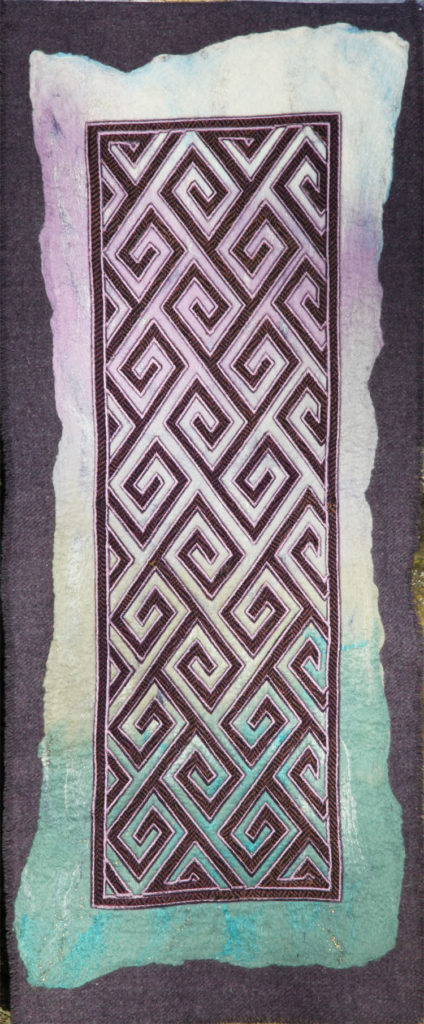Interlaced knotwork of some major Pictish cross slabs found in Scotland, based on triquetra knots [1]
By K Owen
The Living Field welcomes this article and drawings of patterns on stone-carved monuments left by early medieval people based in and around the lowland croplands and grazing lands.
Aberlemno Kirkyard Stone, early 8th Century, Angus
The Aberlemno Kirkyard Stone is an impressive sandstone slab 2.29 m high, 1.27 m wide with stone carved interlacing and fantastic beasts on the front and the carving of the depiction of a battle scene on the rear. The pattern below is from the front, showing the north quadrant of interlacing that forms the upper part of the cross. The stone had been damaged, so there had to be a bit of interpretation of what it should look like, using the other shapes within it and with reference to similar carvings [2, 3].
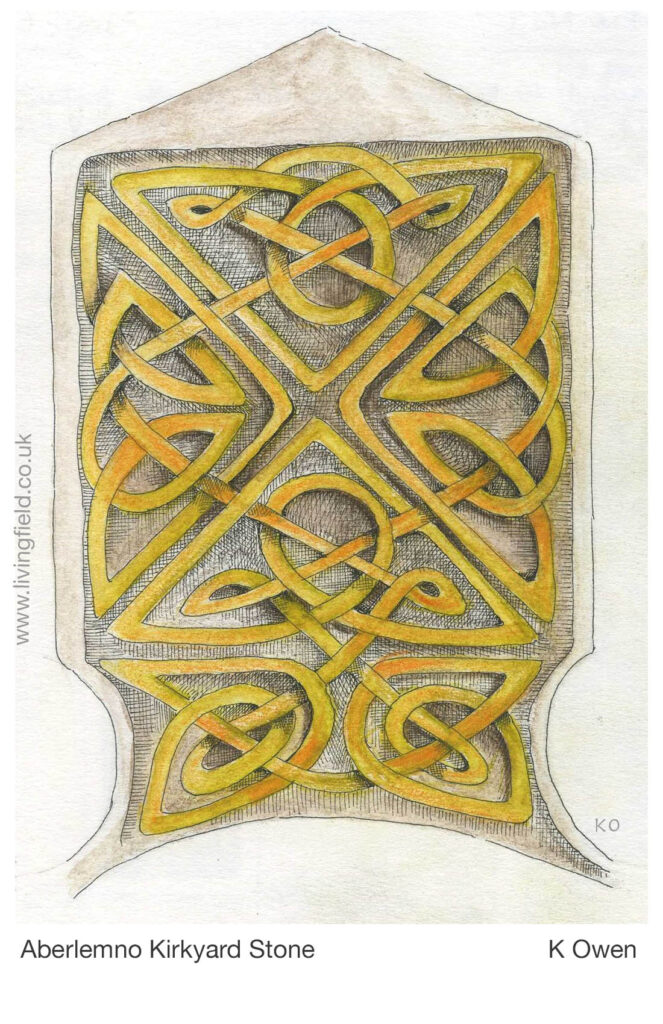
The stone now stands in the grounds of Aberlemno Church [4], itself within a landscape that has sustained crops, livestock and trees over thousands of years. The view of arable and grass fields (upper image, below) was taken from the ‘fort’ on Turin Hill, a few km to the south of the church.
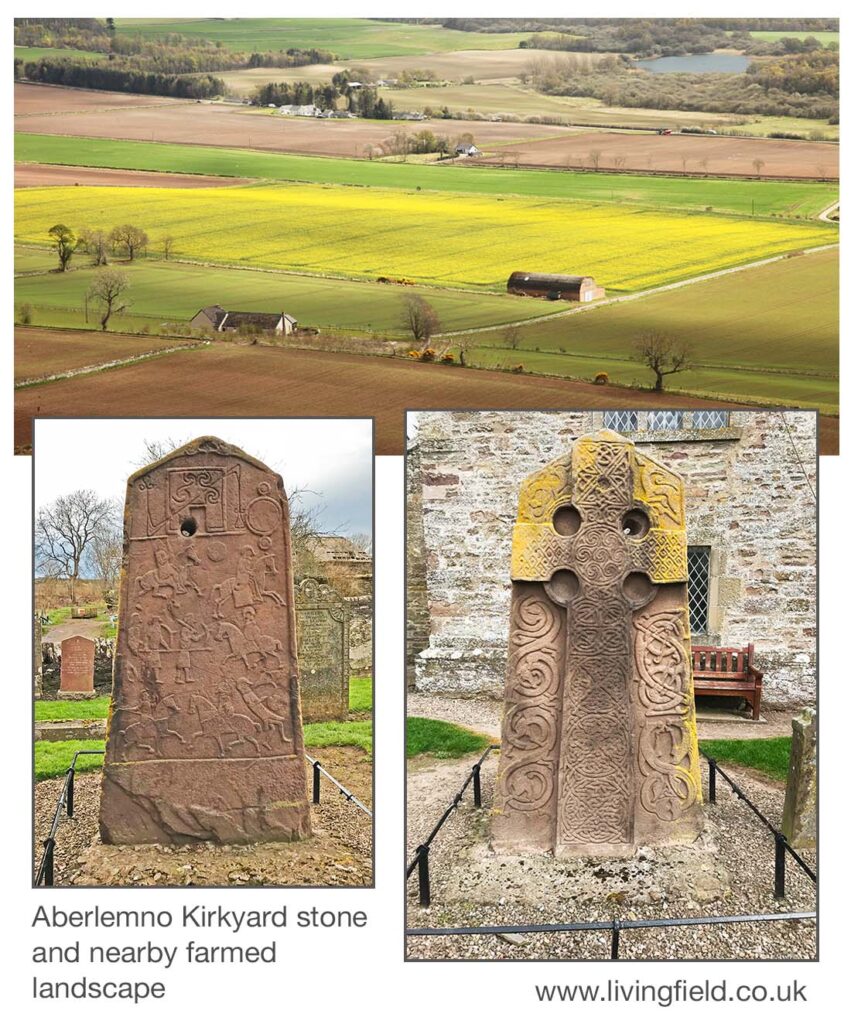
Kilduncan Cross Slab, 10th Century, Fife
The cross slab was found in 2001 lying against the wall of a barn in Kingsbarns, Fife. It is now in St Andrews Museum, Kilburn Park [5]. It is a small slab, only 0.78 m high and 0.53 m wide. There are two S-dragons carved on the face, framing a circle, with carved interlaced knotwork in the centre of the stone.
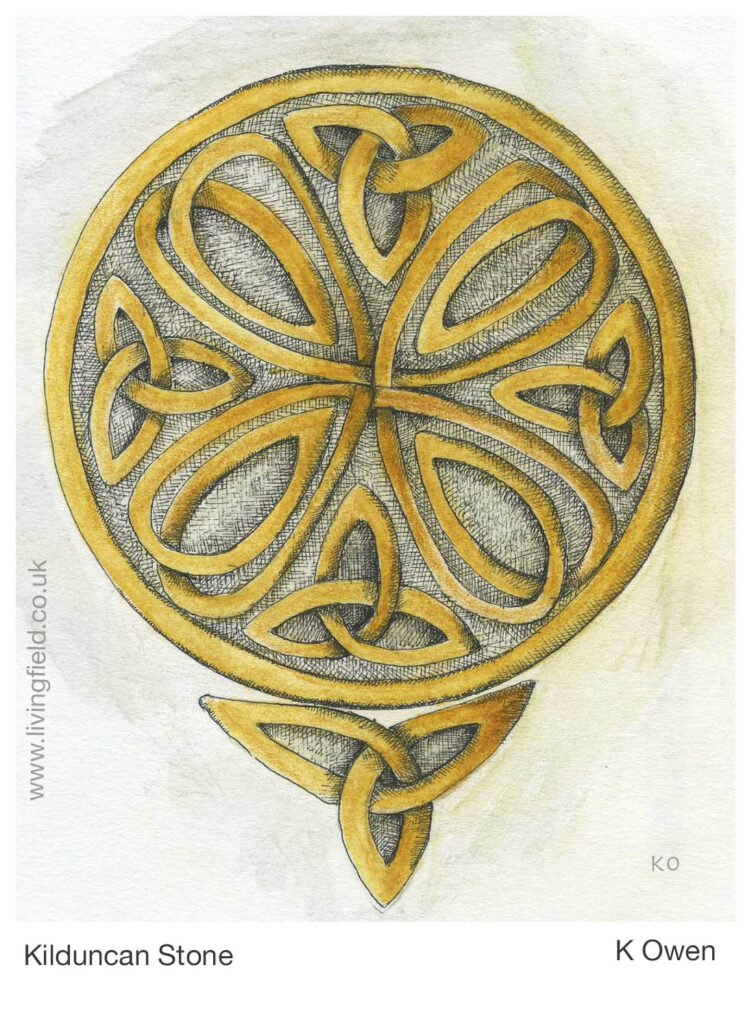
The stone was found near the coast on the edge of an extensive area of mixed farmland producing crops and livestock. The coastline is varied: estuaries and inlets, rock extending out into the sea, stony beaches and as in the photograph, great tracts of sand.
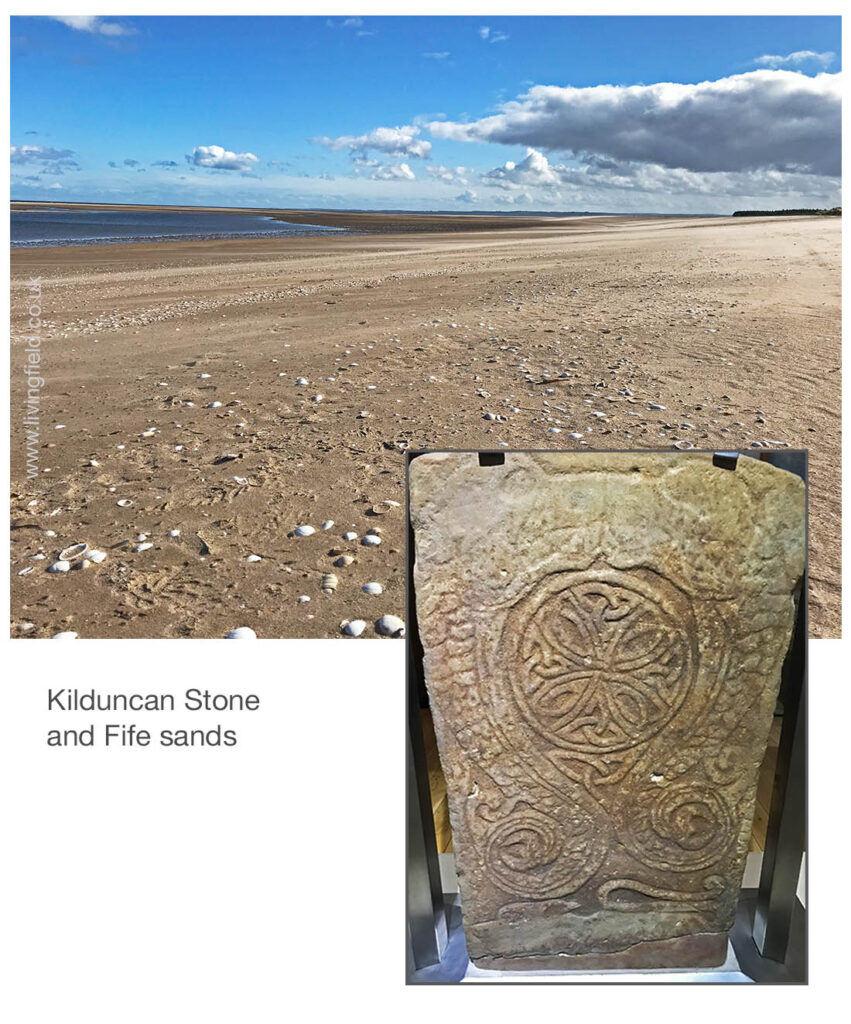
Eassie Cross Slab, 8th Century, Angus (near Glamis)
This great stone is an old red sandstone cross slab 2.03 m high and 1.02 m wide. It is protected within the ruins of the Eassie old parish church [6] by purpose-built screens. There are four quadrants to the cross, each with carved interlaced knotwork, together with hunting scenes and angels. This is the west quadrant of the cross.
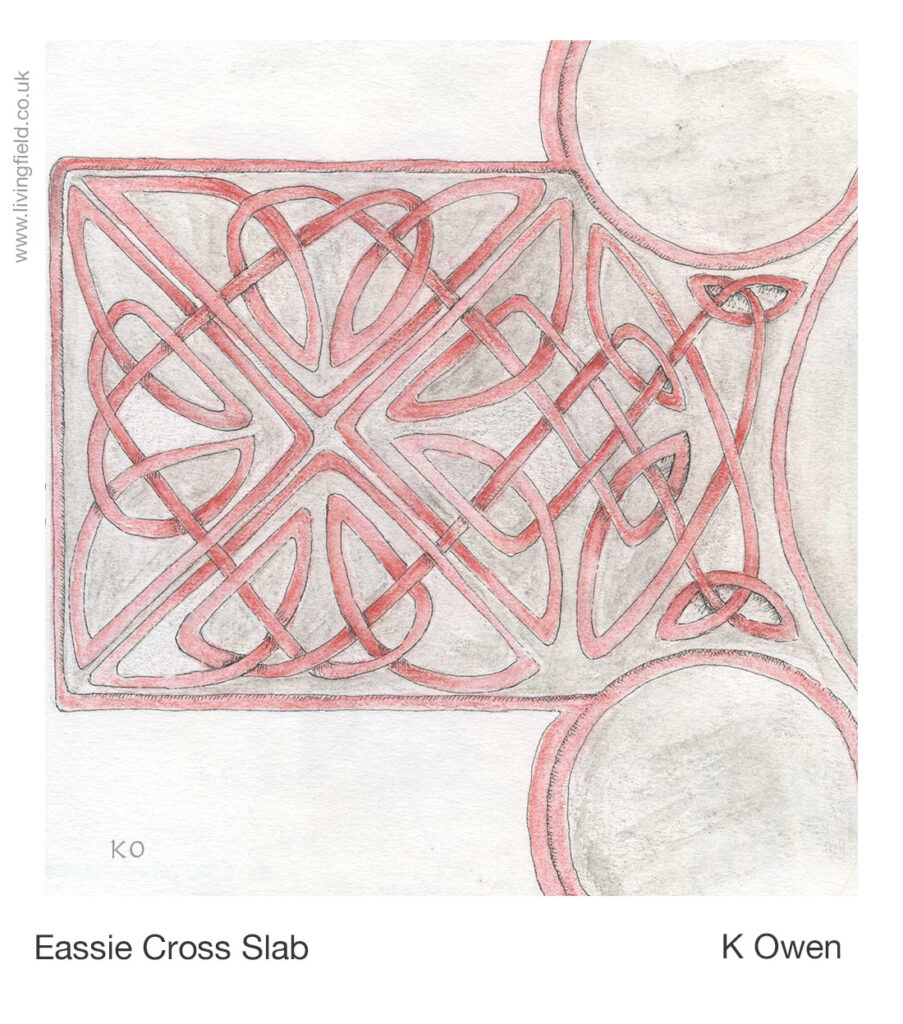
The ruined church lies several km west of Glamis. Images below show the church in 2021, the cross slab under its protective cover, and a nearby view of spring-sown crops just emerging green from the soil, tree lines and forest plantation beyond.
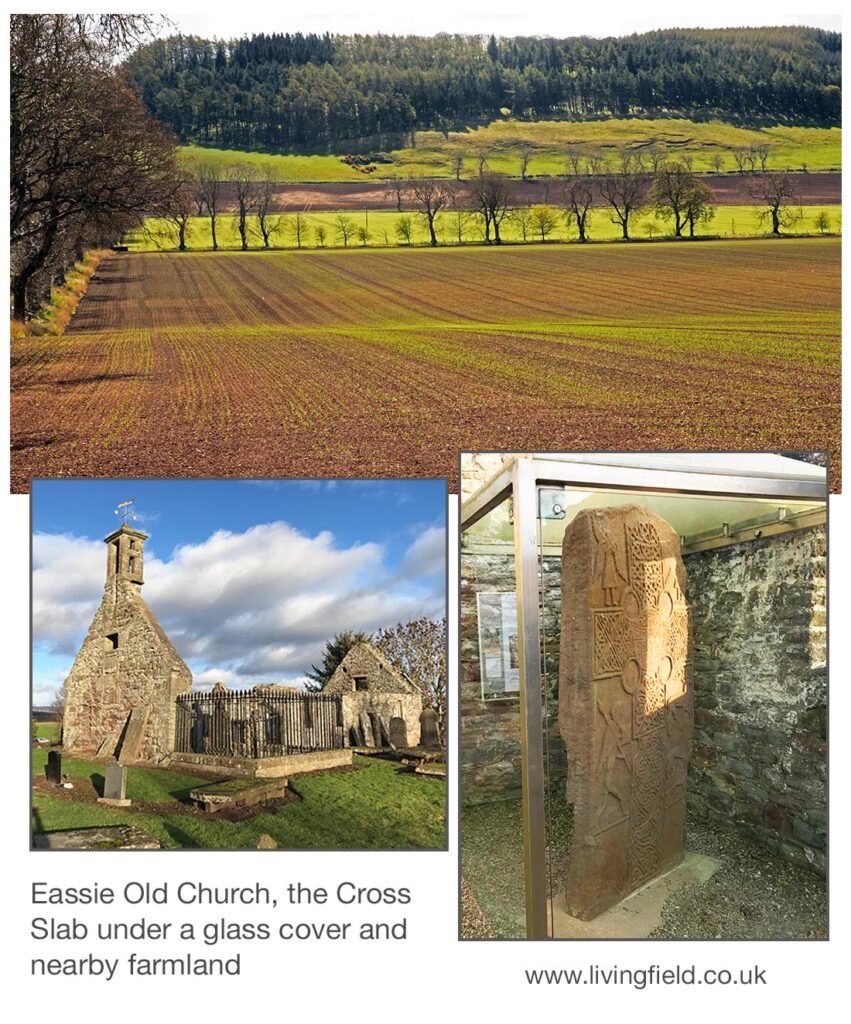
Ulbster Stone, 9th Century, Caithness
This once stood in an ancient burial ground attached to the ruined Church of St Martin at Ulbster near Thurso. Both sides of the slab are carved with strange beasts, symbols and interlacing. This drawing of interlaced knotwork is taken from the north quadrant of the front.
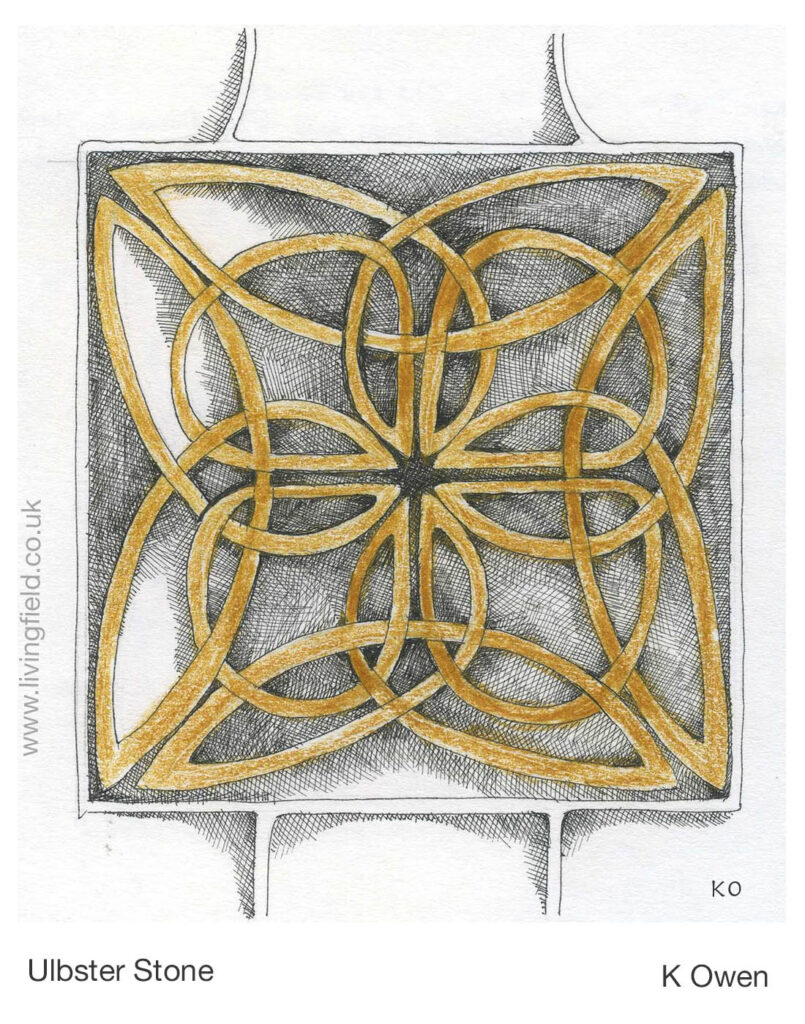
St Vigeans 1 – Drosten Stone, 9th Century, Angus
This remarkable stone stands 1.84 m high and 0.55 m wide in St Vigeans Museum near Arbroath [7]. On the face shown in the photograph below there are a number of carved animals – a doe with a suckling fawn, a bear, an eagle feeding on a salmon, a horned animal and an archer with a bow.
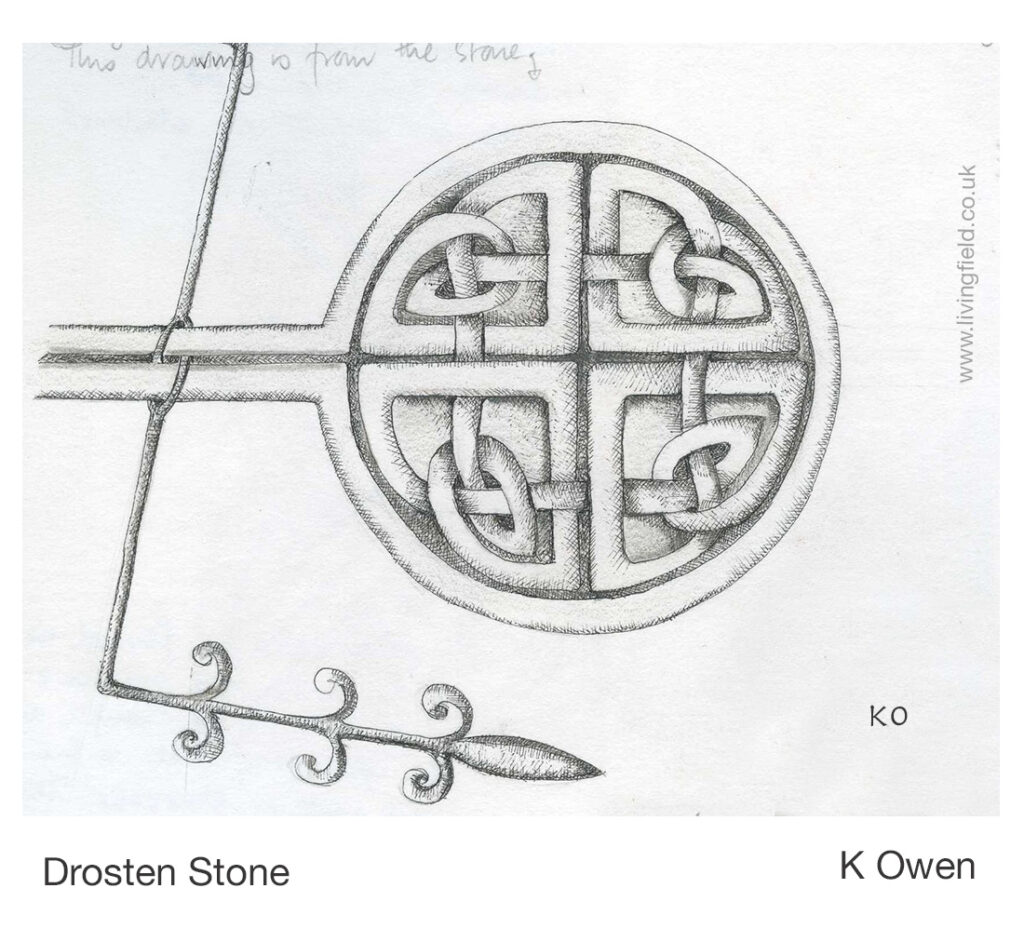
Images below, taken inside the museum show a description of the stone, the stone itself and (inset) a closer view of some of the animals, including ‘a beast with a large curved horn on its head and its tail curved over the back’ [3].
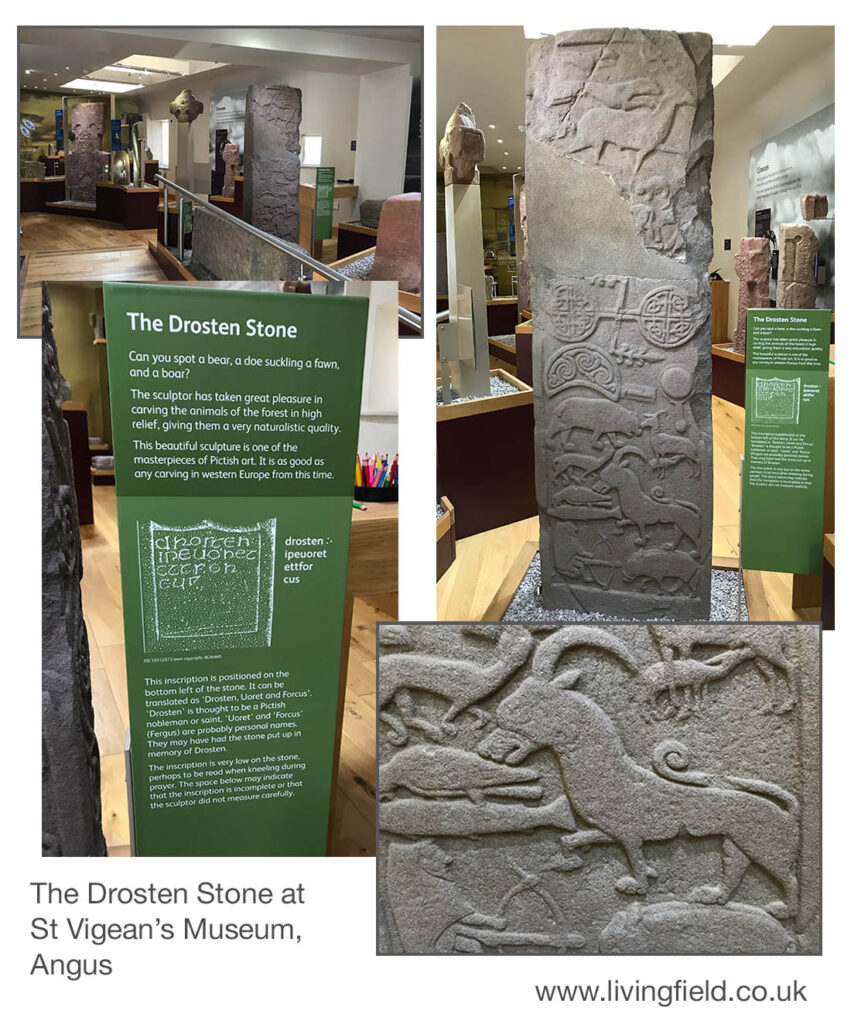
The Boar Stone of Gask, 9th Century, Perthshire
This old red sandstone slab is 1.88 m high and 1.08 m wide and now sited in the grounds of Moncreiffe House. The lower shaft of the cross has this carved interlaced knotwork while carvings of animals such as deer and boar surround it.
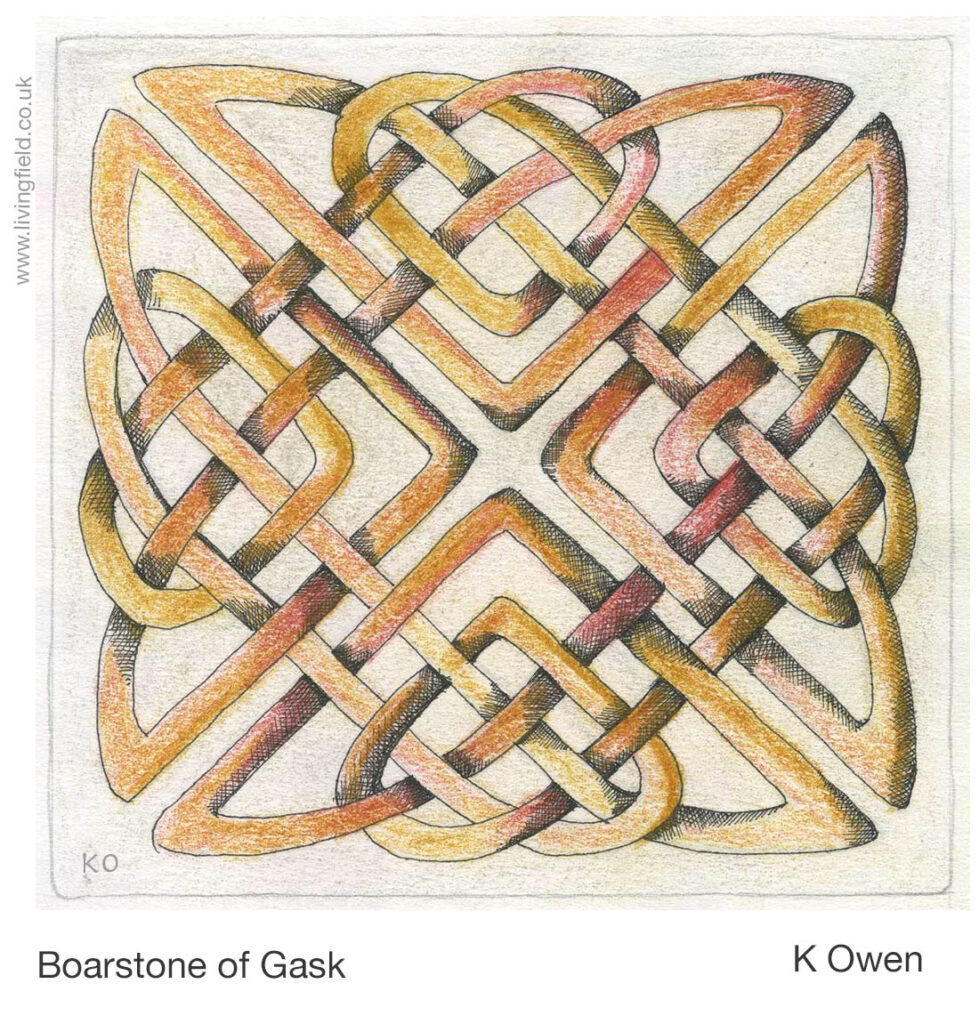
Sources | links
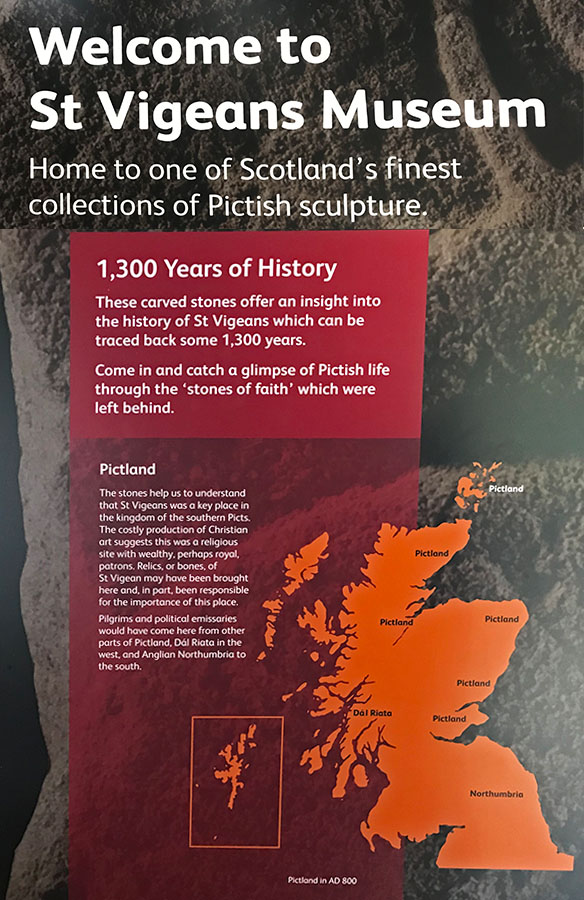
[1] Triquetra knot: a figure with three interlacing loops which have no end. Common from about 7th C in insular ornaments such as illuminated manuscripts and stone carvings.
[2] Canmore: Part of Historic Environment Scotland canmore.org.uk. On the site, search for the name of the object, building or place.
[3] Allen JR, Anderson J. 1903. The early Christian monuments of Scotland. Society of Antiquaries of Scotland. Reprinted 1993 by the Pinkfoot Press, Balgavies, Angus.
[4] Aberlemno Pictish stones. Four in total, three on the roadside and the one shown here in the church yard, sculpted between AD 500 and 800. Free to visit. Details on the Historic Environment Scotland web site at Aberlemno Sculptured Stones.
[5] St Andrews Museum, Kinburn Park, Doubledykes Road, KY16 9DP. More on the Visit Scotland web site.
[6] Eassie Old Church: free to visit. Information on the Canmore and VisitAngus web sites.
[7] St Vigeans Museum, near Arbroath, occupies several cottages opposite St Vigeans church. Contains 38 sculptured stones that were found in and around the churchyard. The web site gives opening times St Vigeans Stones and Museum.

